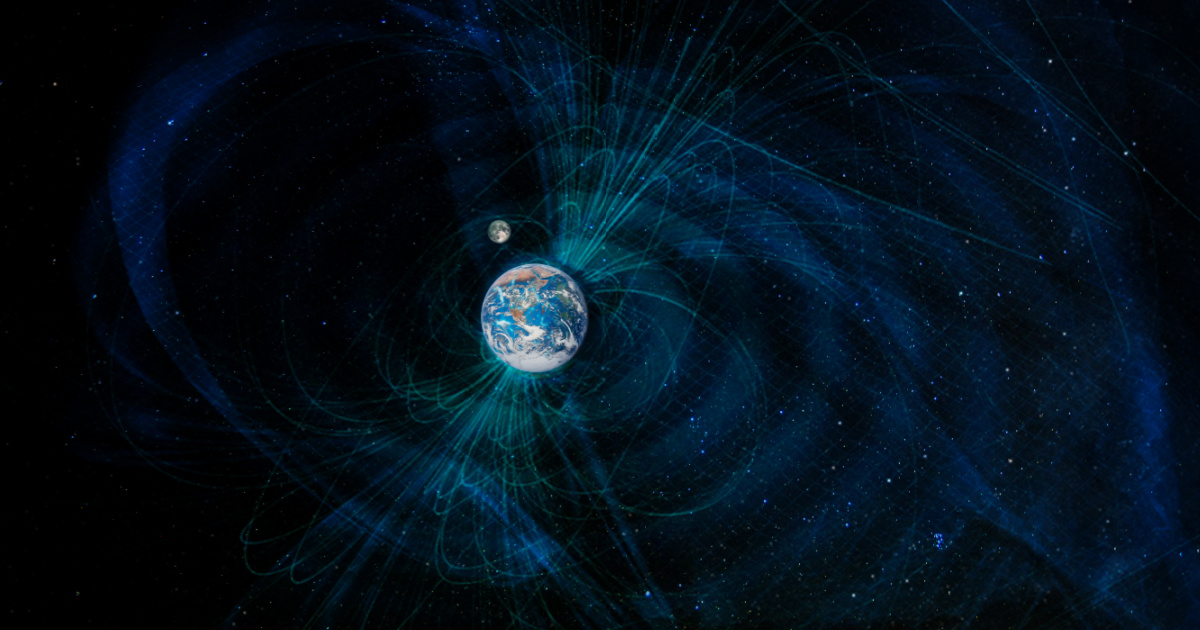
We know a whole lot about how Earth began and how we got from primordial sludge to the marginally evolved human beings and planet we see today.
There are a lot of mysteries, though, and scientists believe the “near collapse” of Earth’s magnetic field 590 million years ago might be the key to unlocking at least one of them.
Earth’s magnetic field has changed direction more than a handful of times over millions of years, and sometimes that means a temporary weakening.
Between 591 and 565 million years ago, the field diminished for a much longer than normal period, and it was shortly after that when the first complex animals appear on the geologic record.
This study suggests that might be what made complex life possible.
Our geomagnetic field is one of the things that is different about Earth as opposed to say, Venus or Mars. It acts as a shield against coronal mass ejections that would cause massive amounts of radiation, and helps the planet resist the stripping of its atmosphere and high solar winds.
Scientists believe that any alien life would be found on a planet with a similar, powerful magnetic field.
You would think that this need would mean that a weakening in the field could be a cause for concern, but scientists have tried and failed to link mass extinction events to previous weakenings.
591 years ago was the lowest field ever recorded, just 1/30th of the modern level, and yet this is what they think could have made a big difference.
The study authors argue that fields below 10% of today’s persisted for 26 million years, including one of the most vital periods for life.
The animals that existed before that were microscopic and/or stationary species. It wasn’t until afterward, around 560 million years ago, when the first active creatures (Ediacaran fauna) first appeared in the fossil record.
Experts believe a rise in oxygen found its way to the ocean, and was the necessary ingredient to spark complex and highly mobile animals. They’re not sure, though, how much extra oxygen was present.
Regardless, the rise in oxygen was a huge game changer – and Tarduno and their co-authors think the magnetic field weakening could be what caused it.
A weaker field translates to more hydrogen escaping from the atmosphere, and with less of it to bond with oxygen, they believe a life-changing shift took place.
The authors do admit that it’s hard to model how much more oxygen would have been available due to the weaker field.
“Quantifying hydrogen loss for Earth with an ultra-low field is challenging as it is observationally inaccessible. Existing models predict an increase in hydrogen loss of anything from 30 to 1,000 percent, and this enormous variation makes for plenty of uncertainty about the resulting oxygen increase.”
Still, they think the rise could have been significant enough to enable the Ediacaran fauna.
“The highest estimates could result in a few percent change of oxygen…that might represent a perturbation or crossing of a threshold, allowing Ediacaran animal diversification.”
They are proposing that the protective field could have shrunk so much that the plasma in the upper atmosphere became exposed to the solar wind, greatly increasing the loss of hydrogen ions.
If definitely sounds as if something unique began around that time, and that the lowered magnetic field could have played a part in it.
I wonder if we’ll ever have a complete picture of how Earth evolved to our modern iteration.
If you thought that was interesting, you might like to read about the mysterious “pyramids” discovered in Antarctica. What are they?